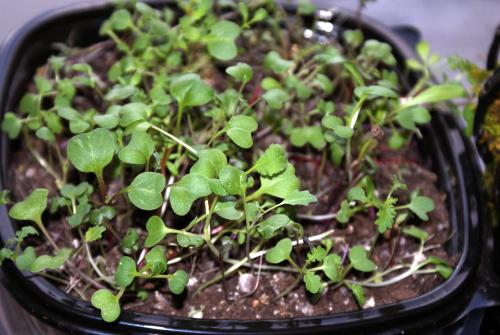Sowing seeds for a vibrant vegetable garden
Planting tips from Michigan State University Extension can help you get your garden off to a great start.

Despite the lingering snow and frigid temperatures, now is the time to start thinking about starting seeds for your garden this spring. For vegetable crops, gardeners have two choices: start from seed or buy transplants. Now is a great time to purchase seeds and to think about when you will plant them for the upcoming season. The first step when buying seeds is to think about what you want to grow. Perhaps the most important consideration is what you and others in your household like to eat. It may also be fun to experiment with new or unusual crops. When children are involved in the growing process, they may be more open to trying new and unfamiliar vegetables.
Once you have decided what vegetables you want to grow, the next step is to choose the variety. It is always a good idea to select disease-resistant varieties when available. Most varieties grown in gardens nowadays are hybrid varieties that have more vigorous growth, higher production, more disease resistance and more uniformity than open-pollinated varieties. However, some open-pollinated varieties can produce as well as hybrids if good growing conditions are provided. Often, gardeners choose open-pollinated varieties for characteristics other than productivity, such as visual qualities or flavors. As an example, a gardener may choose to grow heirloom tomatoes for their unique colors, shapes, and taste. Early-season varieties will reach maturity in all parts of Michigan, while those requiring a longer growing season may not fully mature in northern Michigan or near the lakeshore. Finally, some varieties are more suited to specific uses. For example, you might select a different variety if you want to make pumpkin pie than you would if you wanted to carve a Jack-o-Lantern. Seed catalogs, seed packets, and the staff at your local garden center can provide you with information to help you select the best varieties for your garden. Seed packets are also a great resource for planting instructions specific to the variety including when to plant, seed spacing, and planting depth.
When starting from seed, it’s important to determine if the vegetable you want to grow is a cool- or warm-season crop. This will impact when and where—indoors or out—to plant the seeds. Cool-season crops, such as lettuce, peas, radishes and beets, can be started from seed outdoors, as soon as the soil is ready for planting, (usually by April or early May). You can test your soil to see if it is ready for planting by taking a handful of soil and squeezing it. If any water runs out of the squeezed soil, it is too early to plant. If you want to start warm season crops such as melons, squash, corn, or cucumbers from seed, it is best to start them indoors. The seed packet will tell you when to start the seeds indoors in terms of the number of weeks before the last frost.

Photo credit: Linda Whitlock
Seeds started indoors will need to be planted in a container and later transplanted outdoors. Peat pots, peat pellets or seed starting containers that hold multiple seedlings, called flats, can be purchased at garden centers. Creative gardeners can use containers that they have on-hand, such as disposable plastic or aluminum trays and containers such as yogurt cups, as long as they have a minimum two inch depth and have been thoroughly cleaned.
Use a pasteurized potting soil or planting medium specifically designed for seed starting. Add water to the soil and mix well before adding filling your containers. Ensure adequate light by placing the seedlings in a sunny window or under artificial lighting. Keep in mind that some seeds require darkness to germinate, so be sure to check the seed packet. Keeping the soil warm is important for germination. Provide heat to the bottom of your seedlings by placing them flat on a heat source such a heating pad or a coil of outdoor rope lighting, both available at garden centers.
The Michigan Fresh Starting Seeds fact sheet available at www.michiganfresh.msue.msu.edu provides instructions and handy tips for starting seeds and caring for young plants. You can also contact your local MSU Extension expert with any questions related to seed starting and general gardening.
Michigan State University Extension developed Michigan Fresh, an initiative created to help consumers learn how to tend to home gardens, use fresh produce and reduce spoilage. In addition to Starting Seeds, over 65 Michigan Fresh fact sheets and videos are available for free downloading from the MSU Extension web site at www.michiganfresh.msue.msu.edu. You can also find Michigan Fresh on Facebook and Pinterest.



 Print
Print Email
Email


